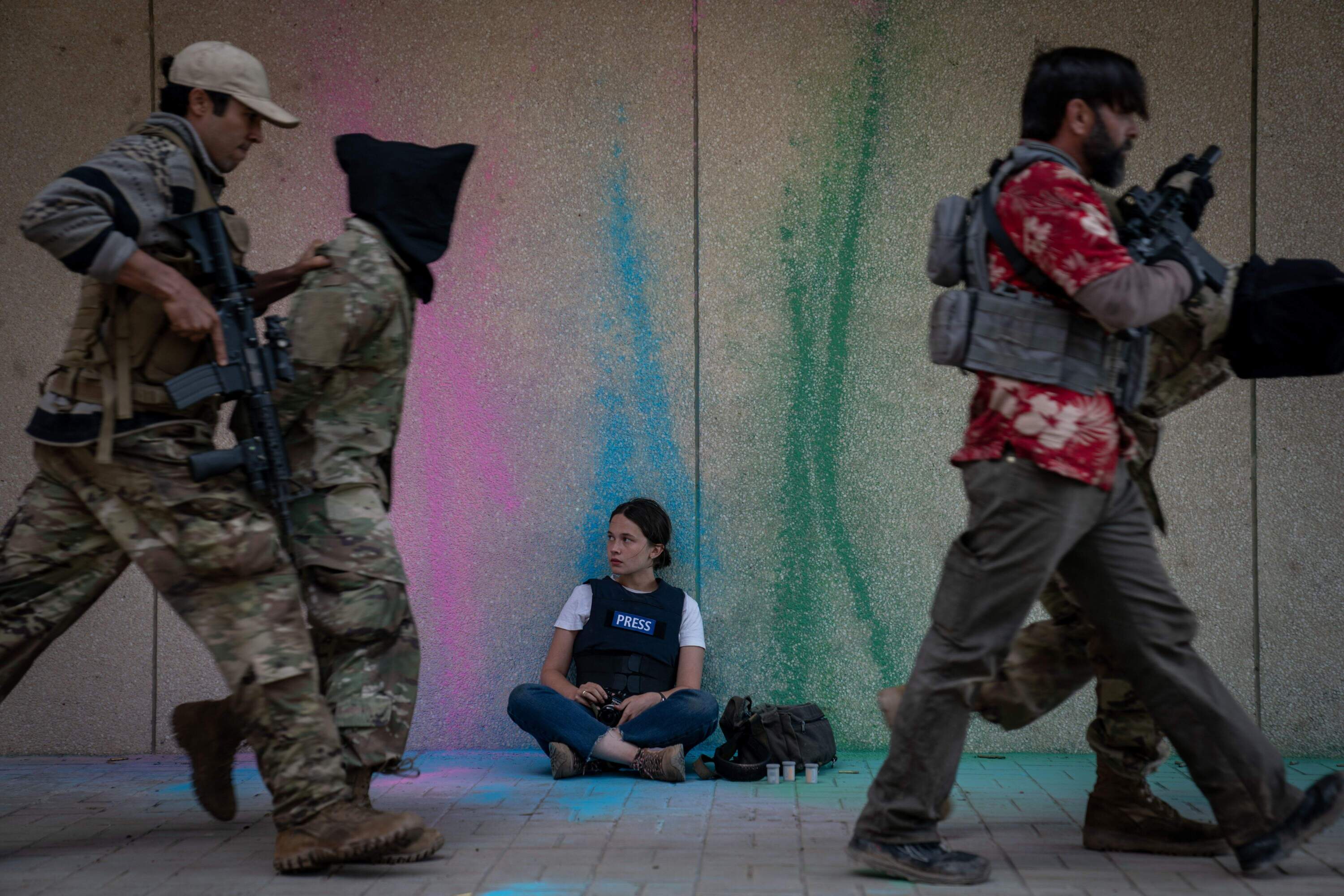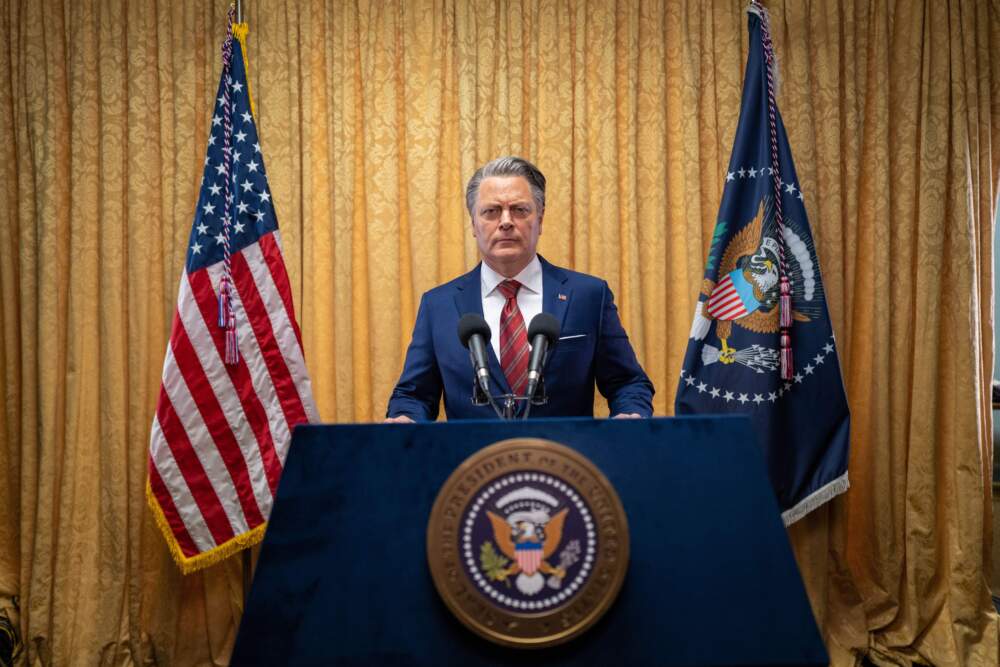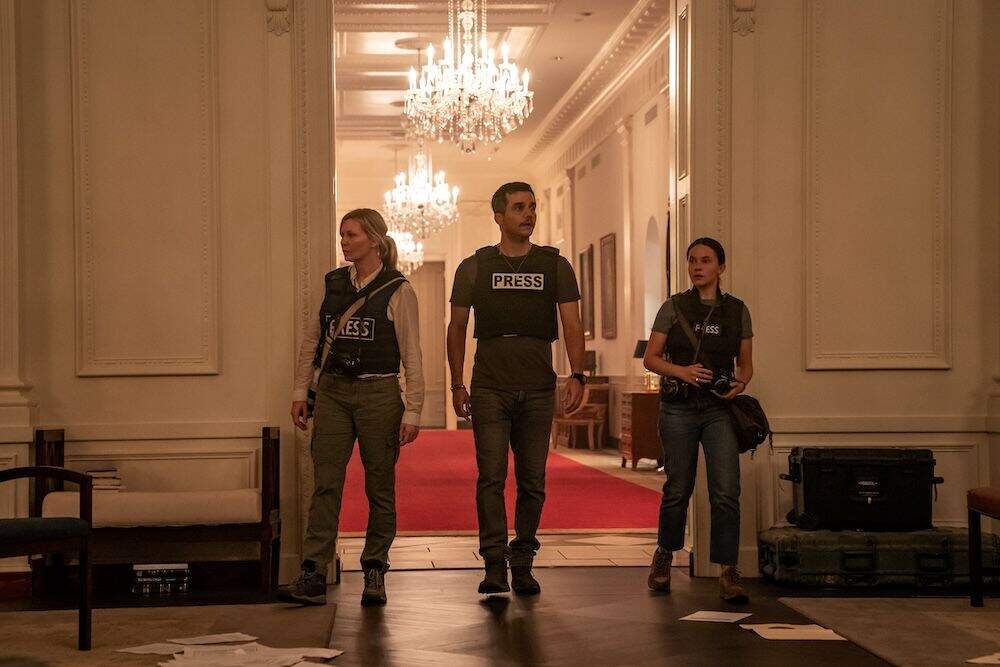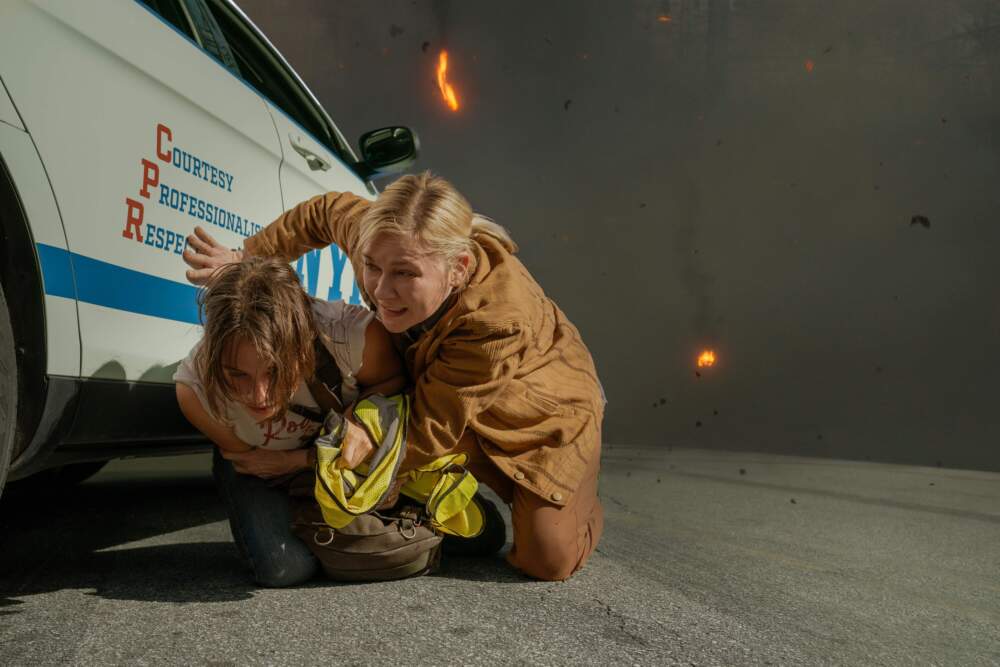Advertisement
Review
'Civil War' is a hackneyed portrait of war correspondents in the thick of it

What we’ve got here is failure to communicate. Writer-director Alex Garland’s “Civil War” begins with a provocative — some might even say incendiary — scenario that the film has no interest in explaining. At an unspecified time in what looks to be the very near future, the U.S. has been torn apart by a war between loyalists to an unnamed, despot president in his third term (Nick Offerman) and a secessionist militia called the Western Forces, which improbably has enough air support and infrastructure to knock the world’s most massive military operation back on its heels. (Even more improbably, we’re told that the insurrectionists are an alliance between Texas and California. I’d love to hear more about how that’s supposed to work.) But all the reasoning and logistics behind “Civil War” are brushed aside as if beside the point — it’s a movie about an ideological conflict in which ideologies are never discussed — in favor of a jittery, hackneyed portrait of four war correspondents in the thick of it.

Kirsten Dunst stars as Lee, a hard-boiled photojournalist trying to get to Washington D.C. in time to watch the White House fall. She’s accompanied by a swaggering, hotshot Reuters reporter (the hugely charismatic Wagner Moura) and a kindly, aging writer played by the great Stephen McKinley Henderson, who works for “what’s left of the New York Times.” Along the way they pick up Jessie (“Priscilla” herself, Cailee Spaeny), an aspiring shutterbug who looks up to Lee like a rock star and shoots on an old Nikon film camera, developing the negatives herself in the field. The road to Washington will leave no cliché unturned, wanly replaying familiar scenes from far better films about adrenaline-junkie journalists trying to do their jobs in war zones, such as Peter Weir’s “The Year of Living Dangerously,” Oliver Stone’s “Salvador” and Michael Winterbottom’s “Welcome to Sarajevo.”
Garland has a clunky way of summarizing what scenes are supposed to be about in his dialogue, instead of actually, like, dramatizing them. For example, we can tell that Lee’s being extra hard on Jessie because the kid reminds her of her younger self thanks to Henderson taking Dunst aside and saying: “You’re being extra hard on her because she reminds you of yourself.” (Subtext is for cowards.) “Civil War” often feels like the actors are reading aloud from an outline instead of a script. Everyone’s given a single note to play — all archetypes in lieu of people. This is the dullest performance I’ve ever seen from the normally electrifying Dunst, who sulks through every scene with such grim, Debbie Downer determination she might as well be Carey Mulligan. The only vivid impression is made by Moura, maybe because the stock character of the hard-drinking, rock ‘n’ roll journalist is inherently more fun than the rest of these mopes. (When he struts around saying gunfire gets him hard, I couldn’t help wishing Moura had played Freddie Mercury.)

Feints to topicality aside, “Civil War” is just another action movie trafficking in old combat photographer tropes that were stale when Don Johnson playacted them in the music video for his hit single “Heartbeat” back in 1986. What’s exasperating is how cynically Garland contorts his storytelling in order to avoid implicating any potential audience members, indulging popular rightwing fantasies about armed insurrection and lefty fears of imperial presidencies while remaining as vague and noncommittal as possible about the reasons for the war we’re watching. Garland wants to play with firecrackers without setting them off. The movie manages to be exploitative while lacking the nerve of an exploitation picture.
Neither political party is mentioned in the film, nor is any religion — which for a film about violent conflict in the United States is basically insane. Instead, we hear cagey mentions of stuff like “the Antifa massacre,” allowing the audience room to assume who did the massacring according to whatever biases we’ve brought into the theater. Some critics call this clever. I think it’s pretty cowardly. Amid the tedium, I couldn’t help wondering what a genuine provocateur like “Dragged Across Concrete” director S. Craig Zahler might have made from this material. But then he probably wouldn’t have gotten a $50 million budget and IMAX bookings. The extent of this film’s moral and political sophistication was perhaps best summed up 33 years ago by statesman and philosopher W. Axl Rose when he asked, “What’s so civil about war, anyway?”

There is one great scene, in which our reporters are waylaid by camo-suited psychos led by Dunst’s real-life hubby Jesse Plemons wearing red novelty sunglasses. They’re a rogue Y’all Qaeda faction out committing war crimes in the heartland, and Plemons — basically reprising his role as the slow-witted sociopath from TV’s “Breaking Bad” — gets the film’s scariest moment, deciding who gets to call themselves an American from behind the barrel of a gun. (Notably, it’s the only instance of racism in this otherwise “-ism”-free affair.) The eerie use of silence and an empty truck call to mind Garland’s terrific 2018 “Annihilation,” which turned depression into an insidious alien terror. The large-scale action sequences in “Civil War” are technically impressive, if monotonous. He’s a much more gifted director of unsettling and uncanny images, like a quaint, apple pie Americana town with armed snipers lining the rooftops.
At least I assume they were snipers. I couldn’t actually see them because at a public preview screening earlier this week, the AMC Boston Common projected “Civil War” cropped to the wrong aspect ratio, hacking off crucial picture information from the top and bottom of the frame. After 15 years of botched press screenings at the city’s sloppiest venue, I’ve become resigned to such incompetence. Still, I felt sorry for the guys I talked to afterward who had paid $22 plus Fandango fees to watch a mangled movie. This town is blessed with some beautiful theaters that have excellent projection, and if you want to see the whole picture you need to choose wisely where you go.
“Civil War” is now in theaters.
